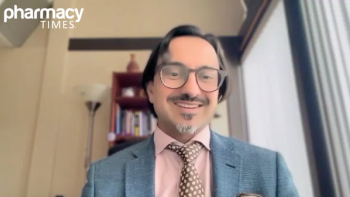
- March 2013 Central Nervous System
- Volume 79
- Issue 3
Medical Marijuana Potential and Pitfalls
Medicinal use of cannabis is gaining acceptance despite a lack of published treatment guidelines.
Medicinal use of cannabis is gaining acceptance despite a lack of published treatment guidelines.
Eighteen states and the District of Columbia have legalized medicinal marijuana. More recently, voters in Colorado and Washington approved the recreational use of marijuana. Despite these actions, marijuana continues to be listed as a Schedule I agent and the Drug Enforcement Administration continues to pursue and prosecute users, shutting down state-approved distributors and dispensaries and seizing medical records.
The medicinal use of marijuana, or cannabis, dates back to 2700 BC, when it was prescribed in ancient China for several conditions, including rheumatic pain and constipation1 (see Table). Cannabis was introduced into Western medicine in the 19th century for its sedative and analgesic effects, but was removed from the American pharmacopoeia in 1941. It reemerged as a recreational drug in the 1960s, but it was not until the early 1990s that scientific interest in cannabis was renewed when the principal active ingredient was stereochemically defined and specific receptors in the nervous system were identified.1
Cannabis’s active ingredients, (-)-transdelta-9-tetrahydrocannabinol (THC) and cannabidiol and its derivatives (referred to as cannabinoids), were identified in 1964.2,3 Although more than 70 psychoactive cannabinoids have been identified, THC is primarily responsible for its desired effects.4 THC can be detected immediately in plasma following the first inhalation. Peak concentrations occur within 10 minutes, and then decrease to approximately 60% of peak by 15 minutes and 20% of peak by 30 minutes. Rapid onset and predictable decay allows for self-titration of dosing among users.5
Approved Uses
Dronabinol, a synthetic delta-9-THC, was FDA approved in 1985 for the treatment of nausea and vomiting induced by cytostatic therapy and in 1992 approved for the loss of appetite for HIV/AIDS—related cachexia.2 Nabilone, another synthetic THC, is also FDA approved for acute and delayed nausea and emesis caused by chemotherapy.5 These antiemetic agents are equally effective as other available agents, but are considered second-line therapy for the treatment of chemotherapy-related nausea.2 Nabiximols, a cannabis extract, is licensed in Germany for the treatment of spasticity in multiple sclerosis (MS).2
Most clinical studies use oral preparations, focusing on neuropathic pain, nausea, and spasticity associated with MS. Cannabis is particularly effective for treating chronic neuropathic pain including pain associated with MS, but has no effect in treating patients with acute pain.2 Randomized trials confirm that up to 25 mg significantly reduces pain compared with placebo. One meta-analysis reports THC (10 mg) outperformed placebo and is analgesically equivalent to codeine (60 mg).5
THC is effective in controlling spasticity in MS, and it is estimated that up to 20% of MS patients use cannabis.3 Studies also document THC’s therapeutic value in treating bladder dysfunction in MS patients, ticks in Tourette’s syndrome, and levodopa-induced dyskinesia in Parkinson’s disease. Although off-label use for these disorders occurs, insurers often deny reimbursement.2 Interestingly, animal studies demonstrate that cannabis decreases drug-seeking behavior linked to heroin, and if confirmed in humans, cannabis could offer another agent in curbing heroin addiction.4
As with other analgesics, dependency can occur with regular cannabis use, resulting in a withdrawal syndrome that occurs in a dose-dependent fashion.5 Withdrawal symptoms (anxiety, insomnia, irritability) occur within 12 hours of discontinued use, are somewhat diminished in 24 hours, and end between 48 and 72 hours.5
Clinical use is contraindicated for those with an abnormal sensitivity to the agent and in those with severe personality disorders and psychoses. Additionally, THC is not recommended for pregnant or breast-feeding women (increased risk of developmental disorders), children and adolescents (increased risk for schizophrenia), the elderly (more vulnerable to side effects), or patients with hepatitis C or addictive disorders.2 Patients with cardiovascular disease should also avoid its use; there is a 4.8-times increased risk for myocardial infarction within the first hour of smoking cannabis.2,4 Chronic use is associated with decreased pulmonary function, chronic obstructive pulmonary disease, and pulmonary infections.4
Drug interactions can be significant. Because THC is metabolized in the liver by cytochrome P450 (CYP) isoenzymes (principally CYP2C), it may interact with other agents metabolized in a similar manner (eg, alcohol, benzodiazepines, amphetamines, atropine, beta-blockers). These drug interactions generally result in increased tiredness.2
Overall, cannabis is much less dangerous than opiates, amphetamines, barbiturates, and even alcohol.4 Because of its potential therapeutic value, the American Medical Association, Institute of Medicine, and American College of Physicians have recommended cannabis to be rescheduled into another category—possibly Schedule III, where codeine and dronabinol are listed.5,6 To date, there is continued resistance to reschedule marijuana despite research demonstrating its therapeutic value.
Adverse Effects
Acute effects are generally experienced as pleasurable and sedating. Sensory perception is often heightened, along with a feeling of increased well-being. In some users, however, the feeling of well-being gives way to anxiety, paranoia, and panic.2 Frequent physical effects are tiredness, dizziness, orthostatic hypotension, dry mouth, reduced lacrimation, muscle relaxation, palpitations, myalgia, increased appetite, and altered sense of time.2 At very high doses, ataxia with loss of balance is common.5 Because studies investigating side effects often include recreational users, caution is the norm in evaluating these data. Amount ingested, method of drug delivery, existence of comorbidities, and purity of agent varied widely.5
One meta-analysis of published clinical studies found that the most common serious adverse effects fell into the respiratory (16.5%), gastrointestinal (16.5%), and nervous system disorders (15.2%) categories. Relapse of MS (12.8%), vomiting (9.8%), and urinary tract infections (9.1%) were the most common of the 164 specific serious events reported.3 These effects were dose-related and the findings suggested that adverse effects diminish over time without evidence of tolerance to THC’s analgesic effects. The impact of long-term use in clinical settings remains unknown, but some studies report increased dependency and increased risk for motor vehicle crashes and cardiovascular disease; among adolescents, ongoing use is associated with impaired psychosocial development and increased risk for mental health issues.5,7
Finally, when compared with cigarettes, cannabis contains a similar array of carcinogenic compounds, some of which are present in higher concentrations than those found in cigarettes.4 Although fatal overdoses are rare, the lethal dose for humans is between 15 and 70 g.4
Counseling Issues
Research on cannabis’s therapeutic potential remains stymied because of its listing as a Schedule I agent. Given the controversy surrounding the smoking of medicinal marijuana, pharmacists must be familiar with the Cannabis laws in their state and offer appropriate counseling on FDA-approved uses. In states where medicinal marijuana is illegal, pharmacists should avoid discussing its medical use. Pharmacists desiring more information on medicinal marijuana are encouraged to visits the websites in states that have approved its use.
Final Thought
Despite the growing acceptance of medicinal marijuana, there are no published treatment guidelines or consensus statements, nor has it been comprehensively studied in large multi-site clinical trials. This is somewhat alarming given its increased use in clinical settings.
Dr. Zanni is a psychologist and health-systems consultant based in Alexandria, Virginia
References
- Zuardi AW. History of cannabis as a medicine: a review. Rev Bras Psiquiatr. 2006;28(2):153-157.
- Grotenhermen F, Müller-Vahl K. The therapeutic potential of cannabis and cannabinoids. Dtsch Arztebl Int. 2012;109(29-30):495-501.
- Wang T, Collet JP, Shapiro S, Ware MA. Adverse effects of medical cannabinoids: a systematic review. CMAJ. 2008;178(13):1669-1678.
- Leung L. Cannabis and its derivatives: review of medical use. J Am Board Fam Med. 2011;24(4):452-462.
- Grant I, Atkinson JH, Gouaux B, Wilsey B. Medical marijuana: clearing away the smoke. Open Neurol J. 2012;6:18-25.
- Schatman M. Medical cannabis: the ethical conundrum associated with recreational legalization of marijuana. www.medscape.com/viewarticle/774482. Accessed November 29, 2012.
- Hall W, Degenhardt L. Adverse health effects of non-medical cannabis use. Lancet. 2009;374(9698):1383-1391.
Articles in this issue
over 12 years ago
New Drugs of 2012, Part 2over 12 years ago
Benefits of Good Oral Hygieneover 12 years ago
Case Studies in Self-Careover 12 years ago
OTC Product Newsover 12 years ago
Restless Legs Syndrome: Learning to Live with Itover 12 years ago
Status Epilepticus: When Seizures Don't Stopover 12 years ago
Lead Poisoning: Why Won't This Problem Go Away?over 12 years ago
A Continued Call to ActionNewsletter
Stay informed on drug updates, treatment guidelines, and pharmacy practice trends—subscribe to Pharmacy Times for weekly clinical insights.


















































































































































































































